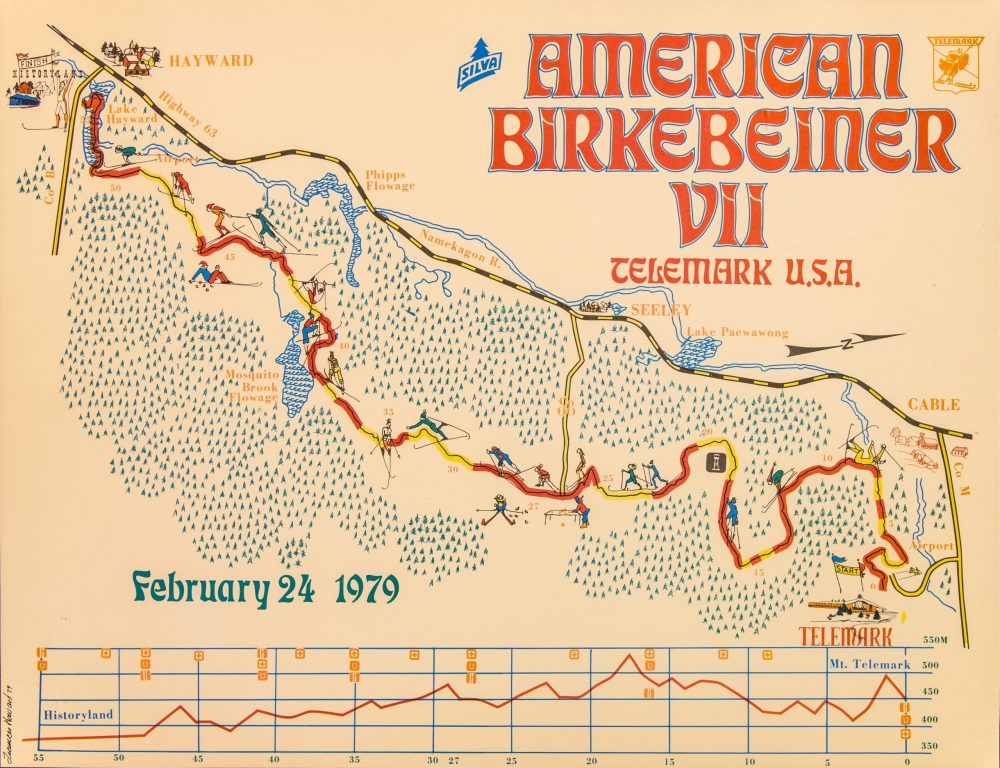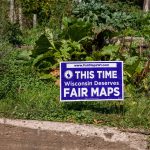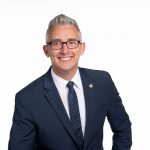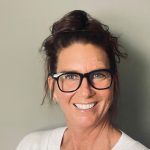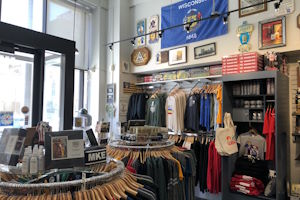How Wisconsin Created Nation’s Greatest Ski Marathon
New book by Eau Claire author traces history of 50-K American Birkebeiner race.
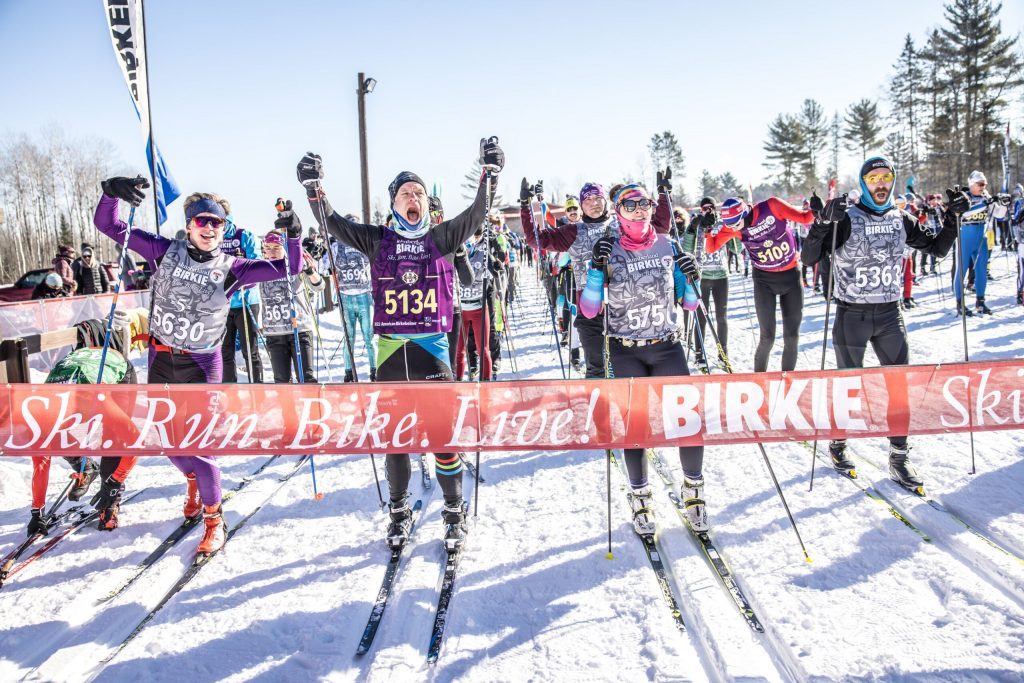
Starting line of the American Birkebeiner race in 2022. Photo courtesy of American Birkebeiner Foundation
Thousands of people travel to rural Northern Wisconsin for the annual American Birkebeiner ski marathon. And to Eau Claire-based author Jerome Poling, the electric feeling of crossing the finish line brings athletes across the globe back year after year.
In his fifth book, “American Birkebeiner: The Nation’s Greatest Ski Marathon,” Poling writes about his 40 years of experience both covering the race as a journalist and participating as an athlete.
“I saw my first Birkebeiner in 1982 and then started doing full Birkies in the early 1990s,” Poling said. “I’ve done 25 full races.”
Set in northern Wisconsin, the Birkebeiner put the city of Hayward and town of Cable on the map for cross-country skiers around the country and around the world.
In the interview Poling shared more about his passion for the race and what it was like interviewing some of its pioneers.
The following was edited for clarity and brevity.
Rob Ferrett: In your book, you take us back to the early days. Set the stage with the founder, Tony Wise.
But of course, Tony, being the big thinker that he was, he didn’t just start a race. He started the American Birkebeiner, which at that time was a real outlier in the ski world. I don’t believe there were any other 50-kilometer cross-country ski marathons in the United States. So when he started the race in 1973, it’s not surprising that only 35 skiers signed up for the long race, and only 54 signed up for the short race. It was a very small beginning for what’s become a very big event.
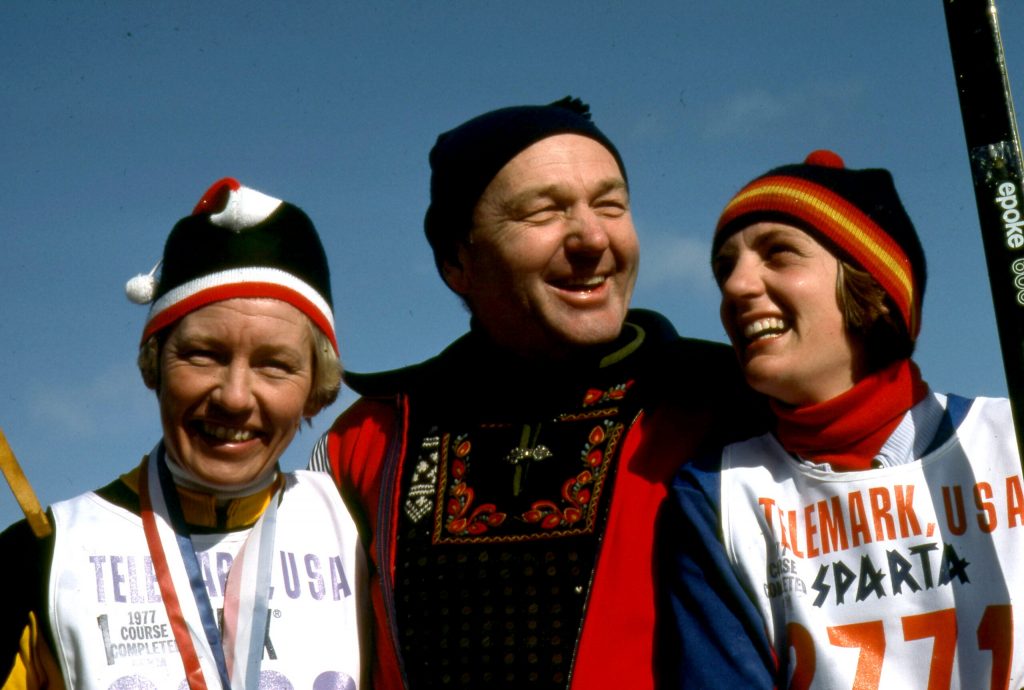
In 1977, American Birkebeiner founder Tony Wise (center) poses with women’s winner Berit Mordre-Lammedal (left) and runner-up Alison Owen-Spencer (right). Photo courtesy of American Birkebeiner Foundation
RF: You do a great job of setting the scene for that first year when nobody knew exactly what was happening. How many people did you interview to write about that very first Birkie?
Today, we know the Birkebeiner as this famous trail, essentially designated for skiing. But for the first four races, they had a sort of jury-rigged trail on logging roads, fire lanes, railroad ditches and various strung-together sections of road that they had to use to get from Hayward to Cable.
I also interviewed the person who groomed the trail the very first year. He pulled two people on Alpine skis behind him all the way from Hayward to Cable to set track. So today we have these giant six-figure groomers that put down beautiful groomed tracks. But back then, that was the trail for the first Birkie — two people pressing in snow on Alpine skis being pulled behind a snowmobile.
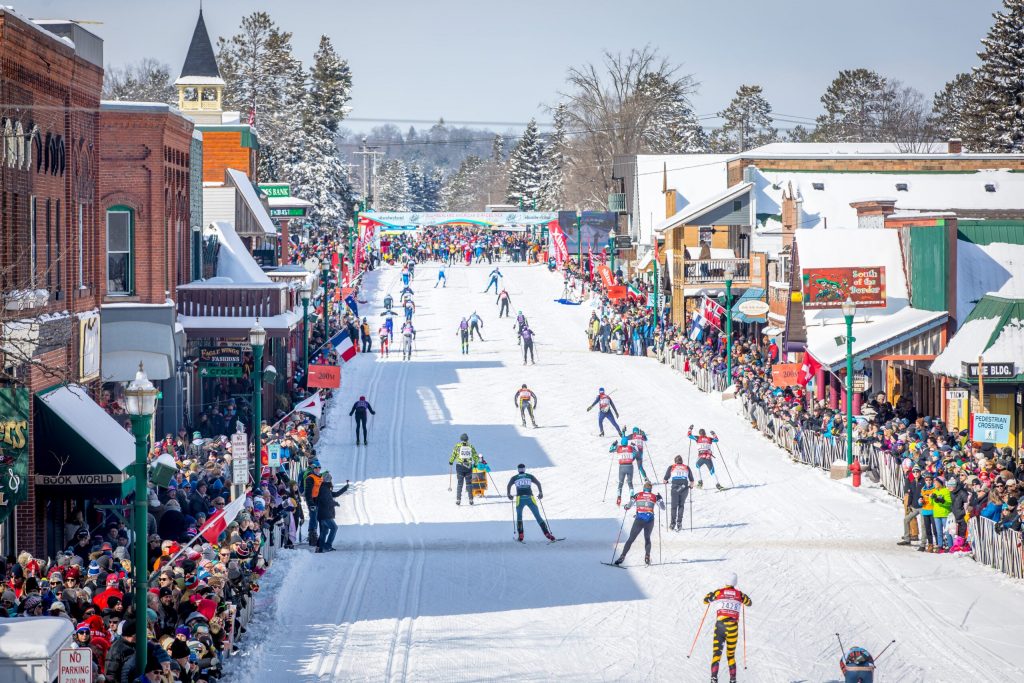
Participants race toward the finish line in 2018. Spectators, using a race app on their phones, can track friends and family by bib number almost to the minute they will reach the Main Street finish. Photo courtesy of American Birkebeiner Foundation
RF: Tony Wise cited his inspiration Curly Lambeau — as in Lambeau Field — helping found the Green Bay Packers and putting a smaller community right on the national and global map. How much has the Birkebeiner meant to that local community — Hayward, Cable and the surrounding region?
JP: It’s had a tremendous impact on that area. Tony left to (go to) Harvard and got his master’s degree, but he wanted to come back to Hayward and put his hometown on the map. He did. Just from the Birkie perspective, it became this international event with skiers from around the world coming to Hayward for the race. So right now, I think about a million dollars is spent by the Birkie foundation just each Birkie week, and that doesn’t even count all the money that is brought in to the hotels, the restaurants, the gas stations, everything, because of all of the thousands of people who show up for that race. So the economic impact has been incredible.
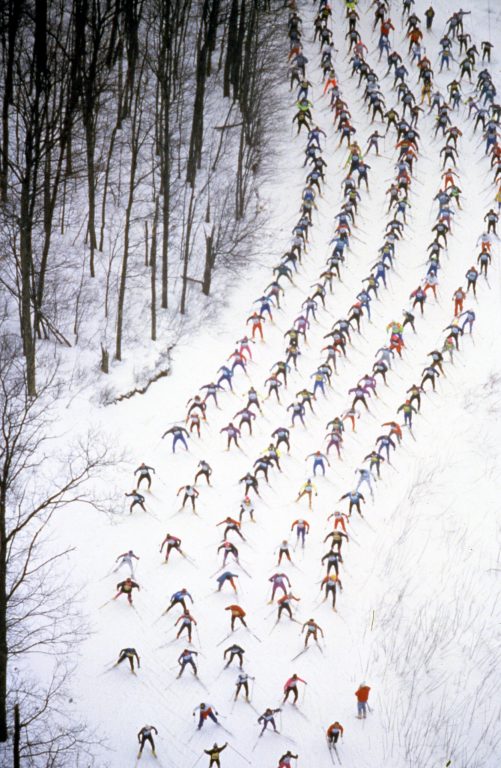
Viewed from above, skiers in the 1995 race appear to be moving in almost complete unison. Photo courtesy of American Birkebeiner Foundation
RF: In the book you also shine a spotlight on volunteers. These days more than 2,000 volunteers are involved in making the annual event happen. How does that community come together to do all this work? What did you see behind the scenes?
Behind the race that made Wisconsin a prime destination for cross-country skiing was originally published by Wisconsin Public Radio.
If you think stories like this are important, become a member of Urban Milwaukee and help support real, independent journalism. Plus you get some cool added benefits.


